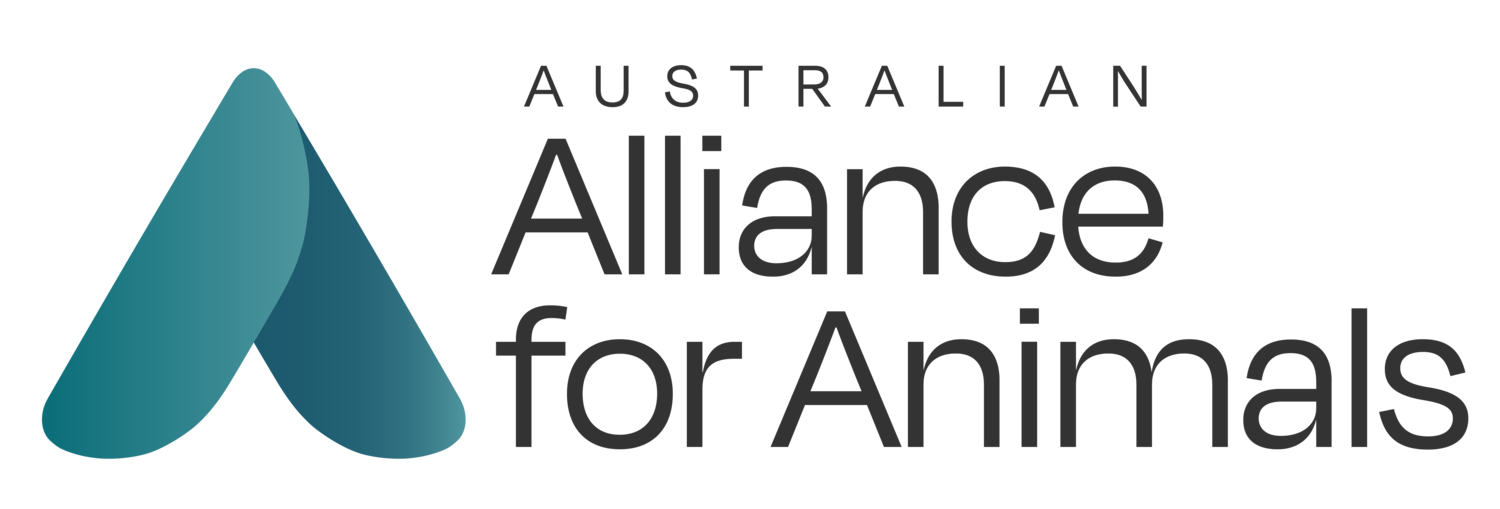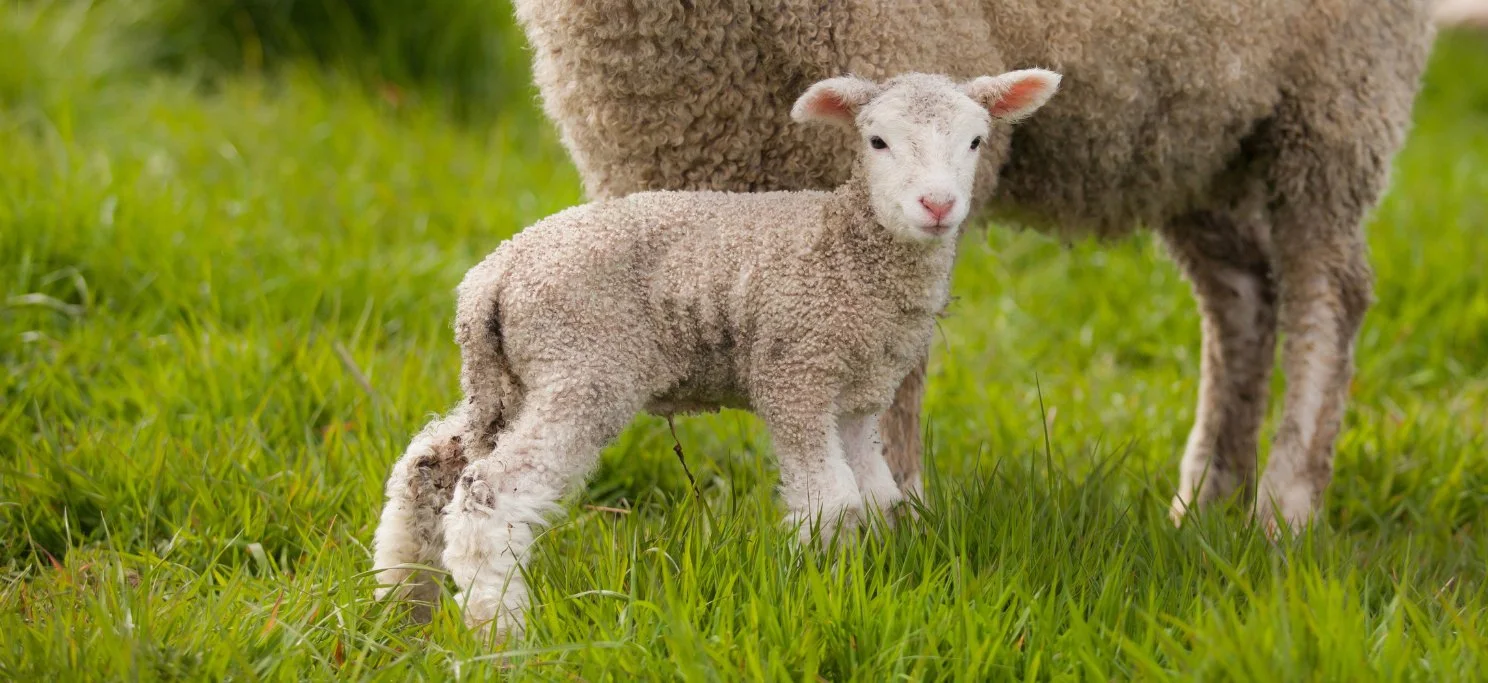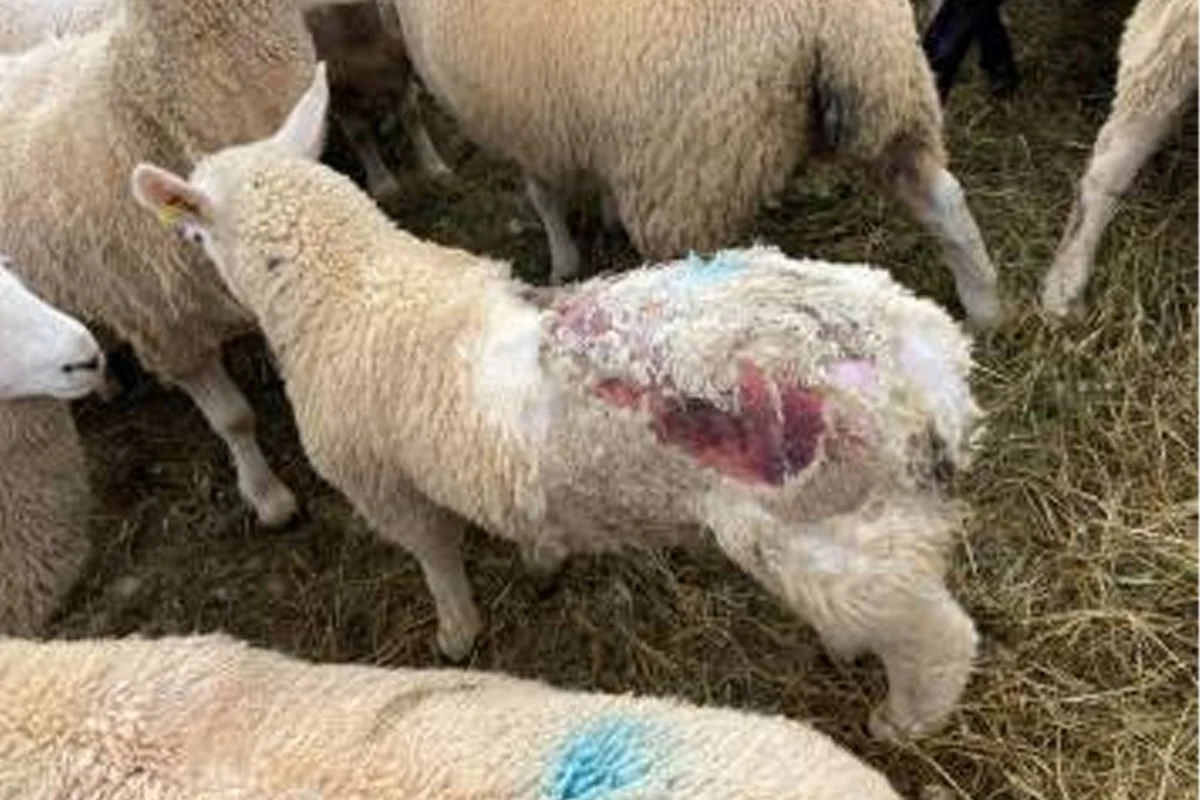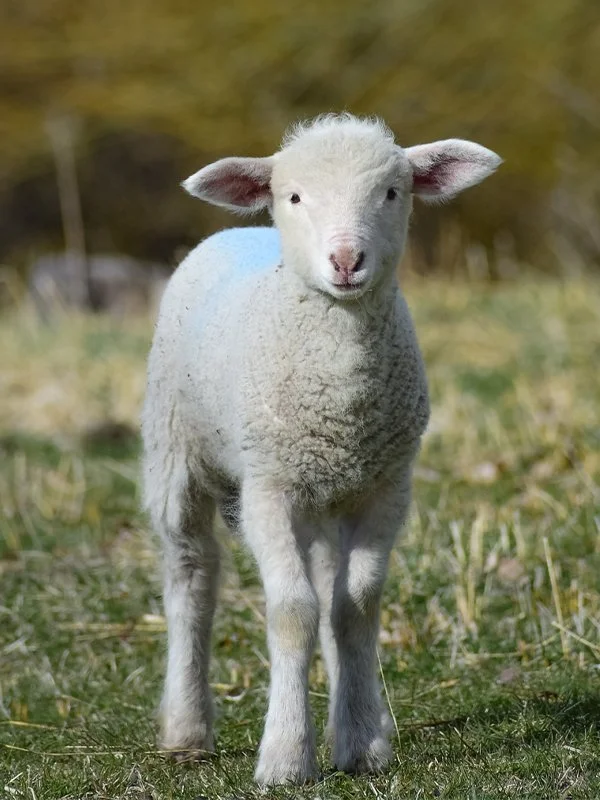Why it’s time for Australia to end live lamb cutting
Every year in Australia, over 10 million lambs are subjected to a painful surgical procedure called live lamb cutting, traditionally known as mulesing. The continued use of this cruel practice, despite the availability of an ethical alternative, highlights the failures within Australia’s animal welfare system. Australia is the only country in the world where live lamb cutting is still permitted, and it is time for this outdated practice to end.
Live lamb cutting is a painful surgical procedure performed on young lambs.
Live lamb cutting is a procedure where 2- to 12-week-old lambs have the large skin folds around their buttocks and base of their tail cut off with metal shears, without prior pain relief. Slicing the skin off causes scarring, leaving the area bare of wool and wrinkles. The bare skin reduces soiling (presence of faeces and urine) and lowers outbreaks of flystrike. The procedure is traumatising for lambs and the large open wound can take many weeks to heal. Despite global outcry, seven out of ten Australian Merino lambs continue to be subjected to this cruel procedure.
Live lamb cutting involves restraining young lambs on their backs in a metal cradle.
Credit: PETA | Investigation in South Australia.
What is flystrike?
The Australian wool industry breeds wrinkly Merino sheep, who have been genetically selected to grow excess skin to increase the amount of wool a sheep grows, resulting in higher profits for the industry. The excess skin and wool, together with the Australian climate and blowfly (Lucilia cuprina) leave sheep prone to flystrike.
Blowflies are attracted to the moisture between the sheep’s skin folds, especially around the buttocks. Flystrike occurs when blowflies lay their eggs in a sheep’s skin folds, and the maggots feed on the sheep’s skin and flesh. To reduce the chance of flystrike, farmers remove the skin folds near the buttocks.
It is important to note that live lamb cutting does not solve the problem of fly infestation. Flies can still lay eggs in skin folds in other areas of the sheep’s body.
Flystrike on a sheep’s back.
Providing pain relief to lambs is not mandatory.
Despite knowing the pain and suffering live lamb cutting causes, providing anaesthetics and analgesics is not mandatory in most Australian states. In July 2020, Victoria became the first state to require some pain relief, followed by Tasmania in July 2024.
While pain relief should be mandatory across Australia, current pain relief options are inadequate as they do not fully alleviate the pain caused by this procedure. There are two types of pain relief available – fast-acting, short-lasting anaesthetics and slow-acting, longer-lasting analgesics (PDF). The best available pain management option is to use both as they serve different purposes, however, only 8% of woolgrowers surveyed administer both. Further, both pain relief options are given post live lamb cutting, meaning they provide no relief during the procedure.
“Seriously anyone who tries to claim that mulesing doesn’t inflict pain is living in Disneyland”
Breeding plain-bodied sheep can end this unnecessary cruelty.
The most ethical alternative to live lamb cutting is for sheep producers to transition their flocks to plain-bodied sheep, who are naturally resistant to flystrike. Plain-bodied sheep have few to no skin folds, which reduces the ability of flies to lay their eggs on the sheep’s body. This viable alternative provides lifelong and whole-body protection against flystrike. In 2020, a survey found that over three-quarters of farmers who transitioned their flocks completed the transition within five years, and more than eight in ten said it was not a costly process.
Comparing wrinkle scores of Merino sheep.
Credit: NSW DPI
Live lamb cutting illustrates the shortcomings of Australia's animal welfare system.
Live lamb cutting remains legal in Australia due to industry resistance and flaws within the current animal welfare governance system.
In 2004, the wool industry responded to global outcry over live lamb cutting and committed to phase out the practice by 2010. But in 2009, the industry withdrew its commitment. In that five-year period, the industry could have successfully phased out live lamb cutting by transitioning to plain-bodied Merinos. Wool Producers Australia states that it will only support a phase out “when there is a universally accepted alternative”. This is an unrealistic outcome and delay tactic.
Animal-use industries often influence and create their own standards, leading to exemptions from animal protection laws for certain species. Animals classified as "pets" receive full protection, whereas those deemed "production animals" do not. This is why it is illegal to cut the skin and flesh from around a dog’s tail, but considered acceptable practice when done to lambs.
Agriculture ministers often face conflicting goals as they are tasked with overseeing animal welfare and boosting industry productivity. With wool production, wrinkly Merinos are bred to increase wool yields, and it is more cost-effective to perform live lamb cutting without pain relief. In both cases, profits are placed above animal welfare.
Each state and territory sets its own standards and guidelines, leading to inconsistent levels of protection. While Victoria and Tasmania have progressed by mandating some pain relief for lambs, other regions lag behind. No jurisdictions have phased out live lamb cutting.
State animal welfare laws have no requirements to ensure animal welfare standards align with the latest scientific research or public expectations. Despite evidence of the pain and suffering caused by live lamb cutting and strong concerns raised by consumers, this inhumane practice persists in Australia.
Credit: FOUR PAWS
Most Australians support an end to live lamb cutting.
The majority of Australians care about animals (PDF) and are supportive of providing them with higher welfare standards. Mutilating lambs, especially without providing pain relief, does not meet their expectations. Recent polling found that two out of three Australians want live lamb cutting to be phased out, while three in four support farmers transitioning to plain bodied sheep.
Australia remains the only country in the world where live lamb cutting is permitted and allowing it to continue is tarnishing our international reputation. Global consumer outcry has resulted in hundreds of brands committing to use wool that is 100% free of live lamb cutting (non-mulesed).
You can help lambs by supporting an end to live lamb cutting.
It’s time to bring Australia in line with the rest of the world and ban live lamb cutting. You can help by:
Contacting all of Australia’s agriculture ministers to phase out live lamb cutting using Humane Society International Australia’s letter template.
Signing FOUR PAWS petition to call for an end to live lamb cutting.
Lambs aren’t the only animals suffering because of Australia’s broken animal welfare system. Support the call for a fairer and more independent animal welfare system today by endorsing the Alliance’s Fair Go For Animals reforms.






